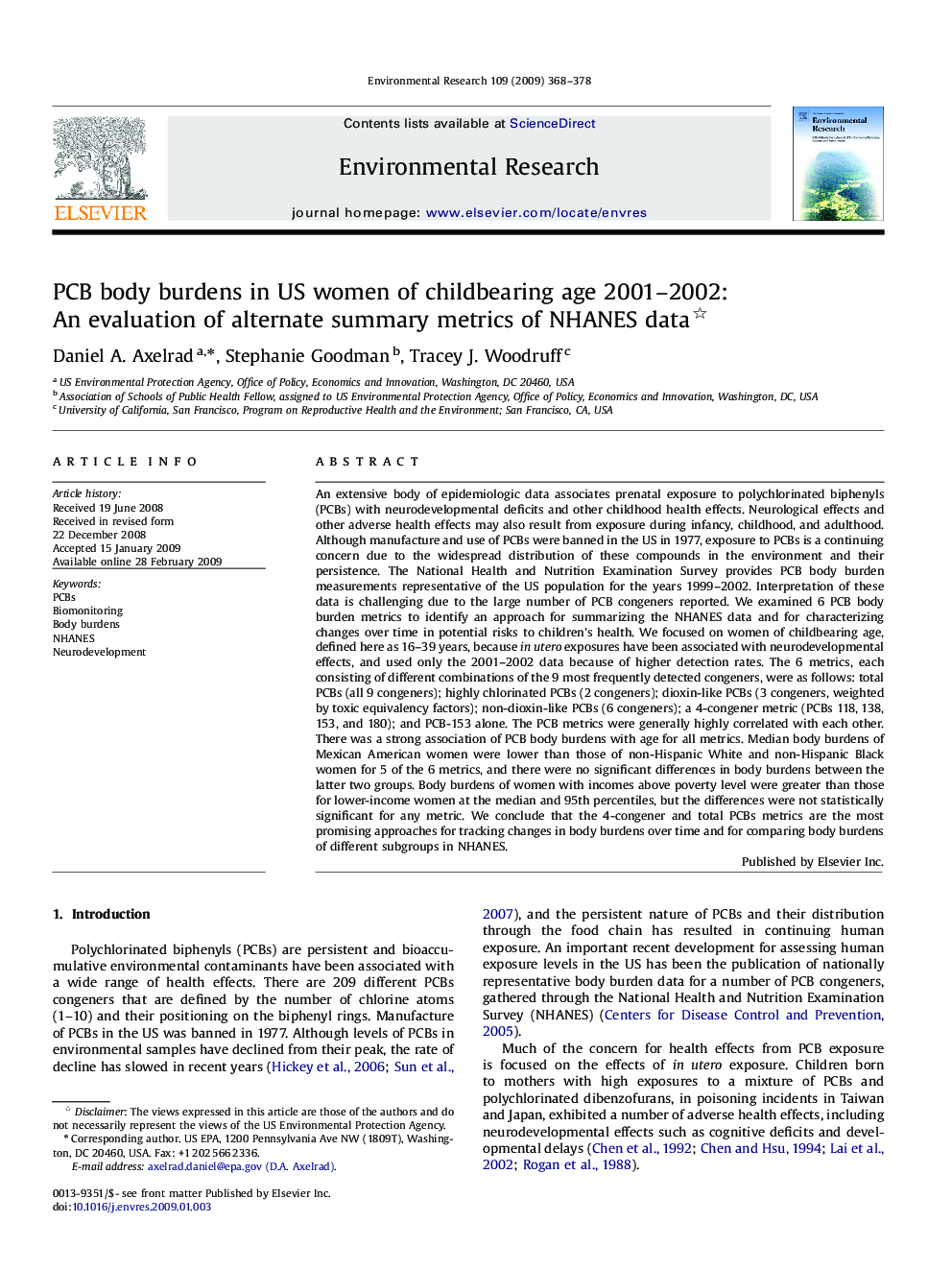| کد مقاله | کد نشریه | سال انتشار | مقاله انگلیسی | نسخه تمام متن |
|---|---|---|---|---|
| 6353434 | 1314437 | 2009 | 11 صفحه PDF | دانلود رایگان |
عنوان انگلیسی مقاله ISI
PCB body burdens in US women of childbearing age 2001-2002: An evaluation of alternate summary metrics of NHANES data
دانلود مقاله + سفارش ترجمه
دانلود مقاله ISI انگلیسی
رایگان برای ایرانیان
کلمات کلیدی
موضوعات مرتبط
علوم زیستی و بیوفناوری
علوم محیط زیست
بهداشت، سم شناسی و جهش زایی
پیش نمایش صفحه اول مقاله

چکیده انگلیسی
An extensive body of epidemiologic data associates prenatal exposure to polychlorinated biphenyls (PCBs) with neurodevelopmental deficits and other childhood health effects. Neurological effects and other adverse health effects may also result from exposure during infancy, childhood, and adulthood. Although manufacture and use of PCBs were banned in the US in 1977, exposure to PCBs is a continuing concern due to the widespread distribution of these compounds in the environment and their persistence. The National Health and Nutrition Examination Survey provides PCB body burden measurements representative of the US population for the years 1999-2002. Interpretation of these data is challenging due to the large number of PCB congeners reported. We examined 6 PCB body burden metrics to identify an approach for summarizing the NHANES data and for characterizing changes over time in potential risks to children's health. We focused on women of childbearing age, defined here as 16-39 years, because in utero exposures have been associated with neurodevelopmental effects, and used only the 2001-2002 data because of higher detection rates. The 6 metrics, each consisting of different combinations of the 9 most frequently detected congeners, were as follows: total PCBs (all 9 congeners); highly chlorinated PCBs (2 congeners); dioxin-like PCBs (3 congeners, weighted by toxic equivalency factors); non-dioxin-like PCBs (6 congeners); a 4-congener metric (PCBs 118, 138, 153, and 180); and PCB-153 alone. The PCB metrics were generally highly correlated with each other. There was a strong association of PCB body burdens with age for all metrics. Median body burdens of Mexican American women were lower than those of non-Hispanic White and non-Hispanic Black women for 5 of the 6 metrics, and there were no significant differences in body burdens between the latter two groups. Body burdens of women with incomes above poverty level were greater than those for lower-income women at the median and 95th percentiles, but the differences were not statistically significant for any metric. We conclude that the 4-congener and total PCBs metrics are the most promising approaches for tracking changes in body burdens over time and for comparing body burdens of different subgroups in NHANES.
ناشر
Database: Elsevier - ScienceDirect (ساینس دایرکت)
Journal: Environmental Research - Volume 109, Issue 4, May 2009, Pages 368-378
Journal: Environmental Research - Volume 109, Issue 4, May 2009, Pages 368-378
نویسندگان
Daniel A. Axelrad, Stephanie Goodman, Tracey J. Woodruff,